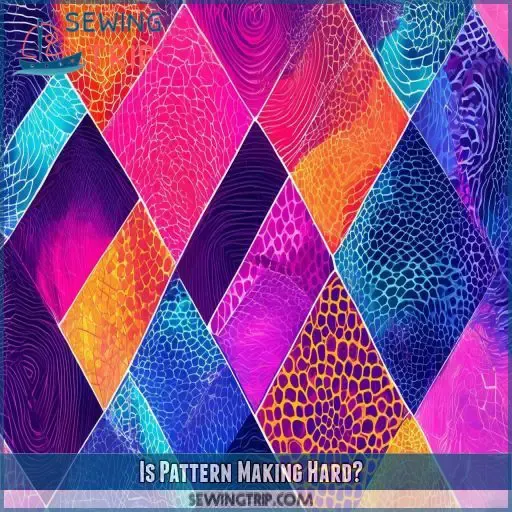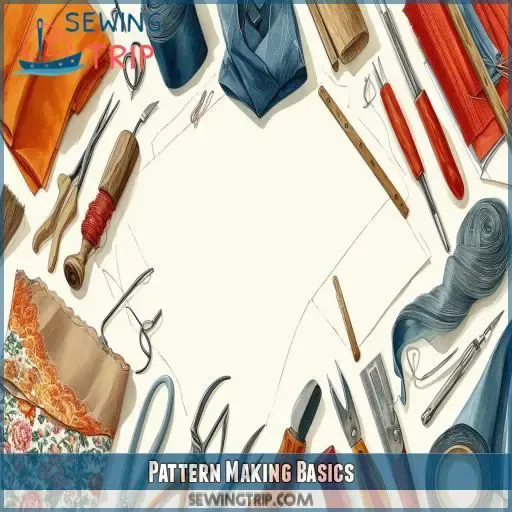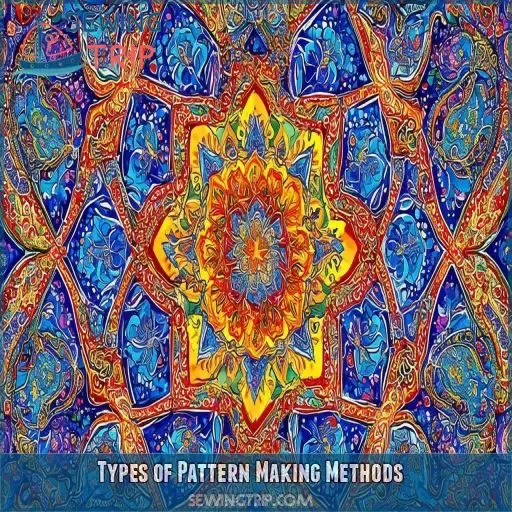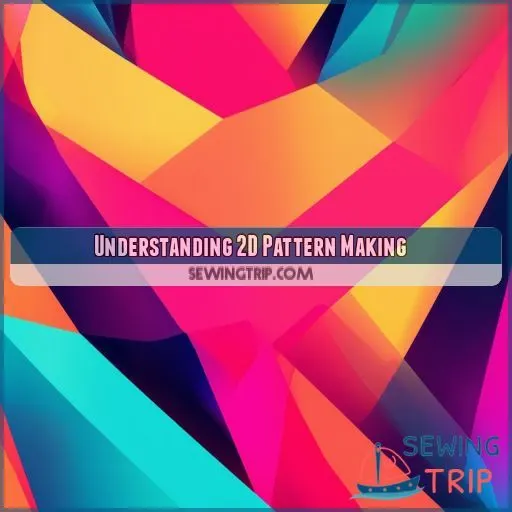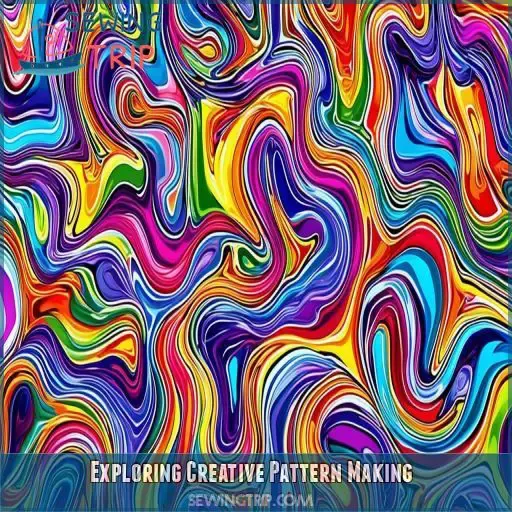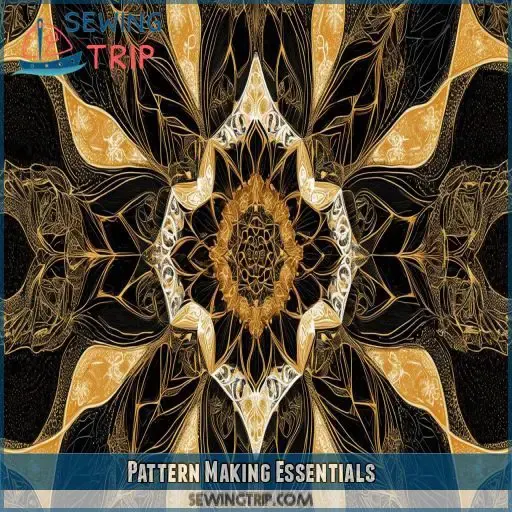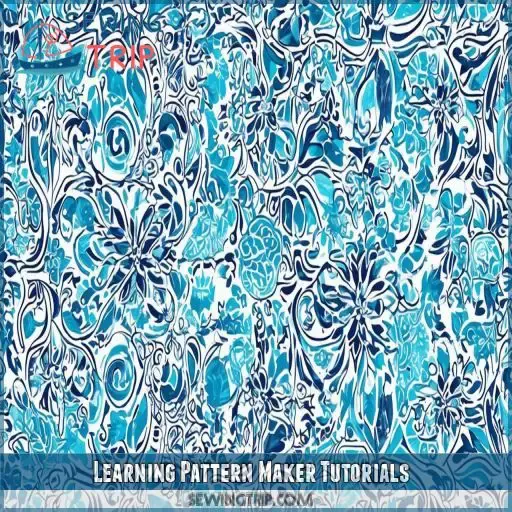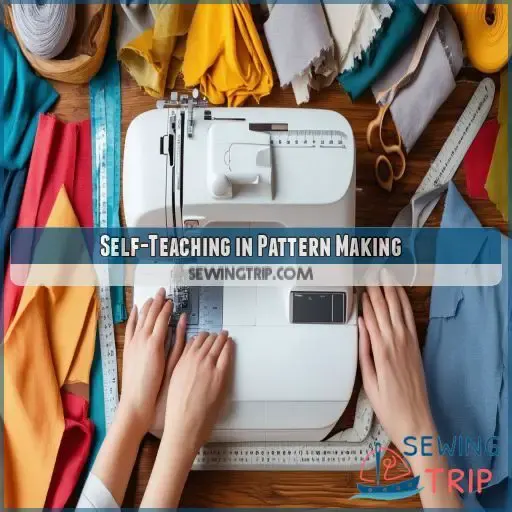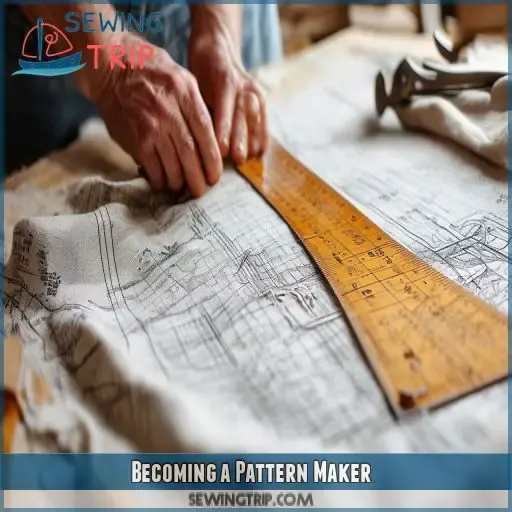This site is supported by our readers. We may earn a commission, at no cost to you, if you purchase through links.
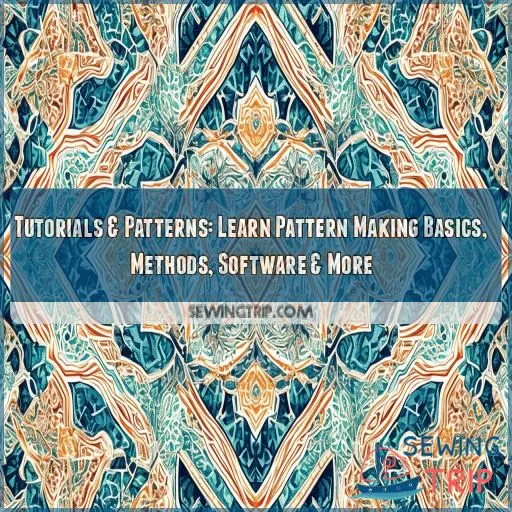 Embark on a captivating journey into the realm of pattern making, where our comprehensive guide unravels the complexities of this art.
Embark on a captivating journey into the realm of pattern making, where our comprehensive guide unravels the complexities of this art.
From grasping the fundamentals to venturing into innovative techniques, you’ll acquire the prowess to craft patterns that exude uniqueness.
Whether you’re a novice or a seasoned designer, this tutorial offers a wealth of knowledge.
Join us on this creative odyssey as we explore the boundless possibilities of pattern making.
Table Of Contents
- Key Takeaways
- Is Pattern Making Hard?
- Pattern Making Basics
- Types of Pattern Making Methods
- Understanding 2D Pattern Making
- Exploring Creative Pattern Making
- Choosing the Best Pattern Making Software
- Pattern Making Essentials
- Learning Pattern Maker Tutorials
- Self-Teaching in Pattern Making
- Becoming a Pattern Maker
- Frequently Asked Questions (FAQs)
- Conclusion
Key Takeaways
- Pattern making is like learning a new language – start with the basics like terminology and fabric selection before diving into the deep end.
- From cloning existing clothes to draping on a stand, there’s more than one way to skin a cat (or make a pattern). Find the method that fits you like a glove!
- Software can be your best friend or worst enemy in pattern making. Choose wisely, grasshopper – consider features, user-friendliness, and your skill level.
- Rome wasn’t built in a day, and neither is pattern making mastery. But with practice, patience, and a dash of creativity, you’ll be stitching up a storm in no time!
Is Pattern Making Hard?
Whether pattern making is hard depends on your familiarity with the process and the tools you choose. It involves a range of skills, from numerical accuracy to an understanding of how fabric behaves and design principles.
The complexity of patterns varies, and more intricate designs present greater challenges. Accurate measuring and a keen understanding of fit are essential to success.
Fabric choice is key, as different materials behave differently and require specific techniques. With practice and the right tools, pattern making can become an enjoyable and rewarding part of the creative process.
Pattern Making Basics
Pattern making basics are essential to master before diving into more advanced techniques. It’s like building a house—you need a strong foundation first. Here’s a quick rundown:
Pattern Terminology: It’s important to get familiar with the lingo. Know your "grainline," "notches," "seam allowance," and more. Think of it as learning a new language for your craft.
Pattern Organization: Keep your patterns in order. Label pieces, store them neatly, and make sure you can easily access them when needed. It’s like keeping your tools organized in a toolbox.
Fabric Selection: Choosing the right fabric is crucial. Consider the drape, stretch, and weight of the fabric. It’s like selecting the right ingredients for a recipe—they all contribute to the final dish.
Pattern Blocks: These are the building blocks of pattern making. Start with basic blocks like the skirt, bodice, and pants. Think of them as your foundation, which you’ll build upon to create various garment patterns.
Working Pattern: This is your go-to pattern, the one you’ll refer to again and again. It’s like a trusted recipe that you tweak and perfect over time.
Measurements: Accurate measurements are key. Take the time to measure twice and cut once. It’s like following a map—one wrong turn can lead you astray.
Sewing Techniques: Master the art of sewing darts, seams, and hems. Techniques like "slash and spread" will become your secret weapons.
With these basics under your belt, you’ll be well on your way to becoming a pattern-making pro.
Types of Pattern Making Methods
There are several methods for pattern making, each with its pros and cons. Here’s a rundown of the most common approaches:
- Pattern Drafting with Measurements: Create patterns from scratch using precise measurements and calculations. This method offers a high level of customization but requires careful work.
- Cloning Existing Clothes: Trace over well-fitting garments to quickly create new patterns. It’s a simple, effective method, especially for beginners.
- Deconstructing Ready-Mades: Take apart store-bought clothes to understand their construction and create patterns. This teaches you about garment structure and pattern making.
- Developing Blocks from Commercial Patterns: Start with basic commercial patterns and adjust them to create custom blocks. This combines the benefits of pre-made patterns with personalized adjustments.
- Draping on the Stand: Manipulate fabric directly on a dress form to create patterns. This method is excellent for visualizing the final garment and experimenting with fabric drapes and styles.
Each method has unique tools and techniques. Choose based on skill level, garment complexity, and desired customization.
Understanding 2D Pattern Making
2D pattern making, or flat pattern cutting, is a method that involves creating patterns without draping. It’s a popular technique for those who want to design garments with precision and control.
To master 2D pattern cutting, you’ll need to develop your pattern-making skills. This includes understanding the essentials, such as drafting basic blocks and slopers, and learning various pattern-making methods. You’ll become adept at reading, printing, and assembling sewing patterns, as well as adding seam allowances.
Pattern alteration techniques are also key to 2D pattern making. You’ll discover how to manipulate darts, pivot them, or use slash-and-spread techniques to create unique designs. With these skills, you can experiment with different styles and create patterns from scratch.
Exploring Creative Pattern Making
Creative pattern making involves experimenting with flat pattern cutting and creative draping techniques to bring your garment designs to life. It’s a fun way to explore your creativity and develop unique fashion sketches.
Flat pattern cutting is a popular method for creating patterns, as it allows for easy experimentation with different designs. You can manipulate darts in various ways, such as pivoting, slash-and-spread, or dart-to-volume techniques, to create interesting shapes and add volume to your garments. Marking the darts accurately is essential for achieving the desired effect.
Creative draping on a stand is another technique you can use to experiment with different fabric manipulations and see the results in 3D. This method provides a more tangible representation of your design and can be a fun way to explore different looks.
Choosing the Best Pattern Making Software
When choosing the best pattern making software, carefully weigh the pros and cons of each option. Consider the key features, functions, and user-friendliness to find the software that best suits your pattern making needs and skill level.
Pros and Cons
When choosing pattern-making software, consider the pros and cons to guarantee it meets your requirements. Here are some advantages and disadvantages to bear in mind:
- Pros:
- Allows for complex pattern drafting with precision and accuracy.
- Offers time-saving features and efficient fabric utilization.
- Provides a wide range of tools and functions for various pattern-making tasks.
- Tutorials and support can help beginners and intermediates learn and improve their skills.
- Cons:
- May require a steep learning curve, especially for those new to pattern making.
- The software mightn’t cover all pattern-making aspects, requiring some manual adjustments.
- Limited by the software’s capabilities and your tool availability.
- Fabric choice and pattern complexity can impact the software’s effectiveness.
Features and Functions
When selecting pattern-making software, factor in the features and functions that will best meet your requirements. PatternMaker Software, a CAD program for pattern drafting, offers various versions with diverse capabilities. The Basic version is complimentary and executes macros, while the Deluxe version facilitates editing. The Home version is a complete CAD package, and the Expert version specializes in grading and digitizing. The Marker version is fashioned for industrial use.
PatternMaker Software utilizes plug-ins and macros to customize measurements and patterns for varied figure shapes. It employs the Scandinavian pattern drafting method, providing measuring instructions to guarantee a precise fit.
The software also incorporates the PatternMaker Hats Collection and the Women’s Coats Macro, demonstrating its adaptability in creating patterns for various garment types.
User-Friendliness
When choosing pattern-making software, user-friendliness is key.
Look for software that is intuitive and comes with tutorials and clear instructions.
Some essential features to consider are:
- The ability to create macros
- Adjusting seam and hem allowances
- Adding tailor’s tacks
Pattern Making Essentials
Now that you’ve chosen your pattern-making software, it’s time to explore the fundamentals of pattern making.
Pattern-making tools are essential for transforming your designs into reality. Essential tools include tracing wheels, French curve rulers, and various measuring devices. These tools assist you in creating smooth, precise lines and curves, ensuring the accuracy and professionalism of your patterns.
Understanding sewing patterns is another key aspect. This entails learning how to read, print, and assemble patterns, as well as incorporating seam allowances. It’s important to grasp pattern ease, which refers to the additional fabric included in a pattern for a comfortable fit. Adjusting a pattern involves making changes to guarantee accuracy and perfect alignment of pattern pieces.
dart manipulation is a valuable technique. Darts contour the fabric to the body, and there are various types. Techniques such as pivoting, slashing, and spreading can be used to manipulate darts for a perfect fit.
Learning Pattern Maker Tutorials
Now that you’re familiar with the fundamentals of pattern making, it’s time to delve into the realm of pattern maker tutorials. This is where the excitement commences, as you’ll commence manifesting your creative visions into reality. Whether you’re a novice or seasoned pattern maker, there’s a tutorial tailored specifically for your needs.
Here are some common subjects addressed in pattern maker tutorials:
- Drafting fundamental blocks and slopers: Learn how to establish the foundation for your patterns, encompassing the bodice block, straight skirt, straight pant, and elementary sleeve block.
- Dart manipulation techniques: Investigate the diverse types of darts, such as pivoting darts and slash-and-spread darts, and how to utilize them to impart shape and structure to your garments.
- Skirt and sleeve patterns: Create an array of skirt and sleeve styles, ranging from straight skirts to full circle skirts, and puff sleeves to raglan sleeves.
With these tutorials, you’ll be well on your way to mastering the art of pattern making. So, procure your pattern software, measuring tape, and creativity, and let’s initiate the journey!
Self-Teaching in Pattern Making
Self-teaching pattern making is an engaging challenge, and you can become your own master with dedication and practice. You’ll need to get familiar with the essential pattern drafting tools and methods, as well as key concepts like pattern ease, trueing patterns, and dart manipulation.
Start with the basics: a ruler, measuring tape, pen, eraser, and scissors are your allies. Learn to draft basic blocks and manipulate darts. Understand the different types of darts and how to pivot, slash, and spread them.
There’s a world of online tutorials and software to aid your journey. Explore free resources and pattern-making software to enhance your skills. With each new pattern, you’ll gain control and precision, mastering the art of pattern making.
Becoming a Pattern Maker
Becoming a pattern maker is an exciting journey that requires dedication and a willingness to learn. Here are some steps to guide you on your path to becoming a skilled pattern maker:
- Education and Training:
- Invest in your education by enrolling in pattern-making courses, either online or in-person. These courses will provide you with a solid foundation in the fundamentals of pattern making and help you develop your skills.
- Explore pattern making books, workshops, and classes to enhance your knowledge. Seek out resources that offer a thorough understanding of pattern drafting, grading, and the latest industry trends.
- Practice and Experience:
- Practice is key to mastering any craft. Dedicate time to work on personal projects, experiment with different techniques, and refine your skills. Start with basic patterns and gradually challenge yourself to create more complex designs.
- Seek out opportunities to gain hands-on experience. Offer your services to local designers or fashion startups, or consider interning with established pattern makers to learn from their expertise.
- Networking and Community:
- Engage with the pattern-making community by joining online forums, attending industry events, and connecting with fellow pattern makers. These interactions will expose you to diverse perspectives, techniques, and potential collaboration opportunities.
- Build relationships with fabric suppliers, manufacturers, and fashion designers. Understanding the industry and developing a strong network will open doors to future career prospects.
Frequently Asked Questions (FAQs)
Can you teach yourself patternmaking?
Yes, you can teach yourself patternmaking. It’s a skill that requires practice, but with dedication and the right resources, you’ll master it. Start with basic blocks, learn dart manipulation, and gradually tackle more complex designs. Don’t be afraid to experiment!
What program to use for pattern making?
Passionate about creating your own patterns? You’re in luck! PatternMaker software is your go-to for digital drafting. It offers various versions, from Basic to Expert, catering to different skill levels. You’ll be designing custom fits in no time!
How can I create a pattern for free?
You can create patterns for free by using basic tools like rulers, pencils, and paper. Trace existing garments, draft simple shapes, or download free printable templates online. With practice, you’ll develop skills to design custom patterns without costly software.
How do I become a pattern maker?
To become a pattern maker, you’ll need to master drafting techniques, understand garment construction, and develop an eye for detail. Start by learning basic blocks, practice dart manipulation, and experiment with creative pattern cutting. Continuous learning is key.
How long does it take to master pattern making?
Buckle up, pattern prodigy! You’ll conquer this craft in no time! It typically takes 2-5 years to master pattern making. You’ll need dedication, practice, and patience. Start with basics, then tackle complex designs. Keep honing your skills!
Can I make patterns without math or technical skills?
While math and technical skills are helpful, you can still create patterns without them. Start with simple designs, use tracing methods, and gradually build your skills. Experimentation and practice will help you develop pattern-making intuition over time.
Whats the difference between industrial and home pattern making?
You’ll need a million years to master industrial pattern making! It’s far more complex than home patterns, using specialized software, grading for multiple sizes, and focusing on mass production efficiency. Home patterns are simpler and more customizable.
Are there eco-friendly alternatives to traditional pattern paper?
You’ve got eco-friendly options! Try recycled paper, fabric interfacing, or even old bedsheets. Reusable pattern materials like Swedish tracing paper or muslin can cut waste. Digital patterns are another green choice for tech-savvy sewers.
How do cultural differences affect global pattern making practices?
You’ll find cultural influences shape pattern making globally. From traditional garments to sizing norms, each region’s practices reflect its heritage. Embracing these differences can spark innovation and broaden your design perspective in today’s interconnected fashion world.
Conclusion
Coincidentally, as you’ve progressed through this guide, you’ve mastered the art of pattern creation. You’ve gained proficiency in the fundamentals, investigated techniques, and discovered software options.
Empowered by these insights into pattern making, you’re now capable of designing unique patterns. Remember, practice leads to perfection. As you refine your abilities, pattern making will become instinctive.
Whether you seek it as a hobby or a profession, the realm of pattern making is now within your grasp. Embrace your creativity and embark on your crafting journey!

